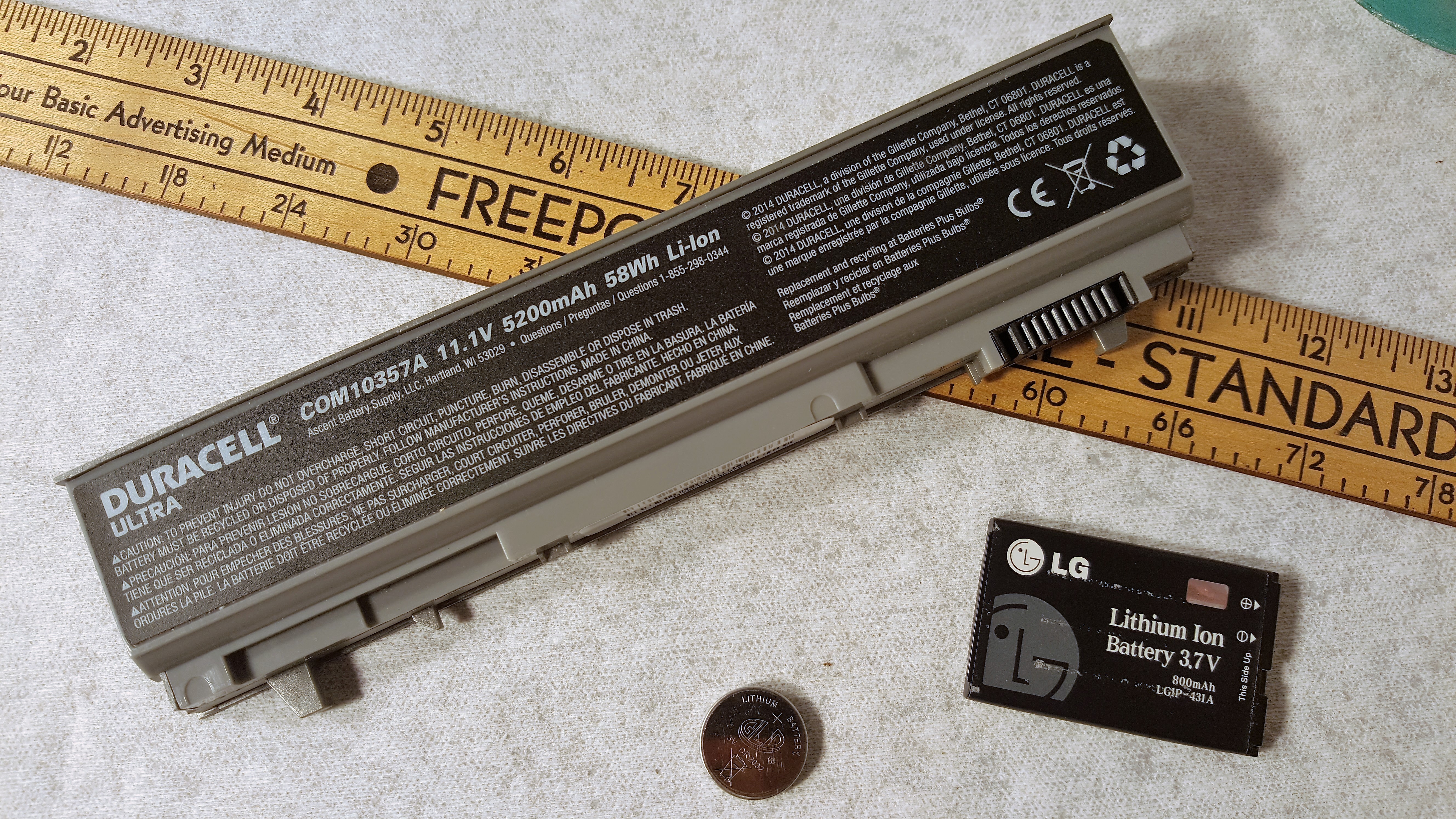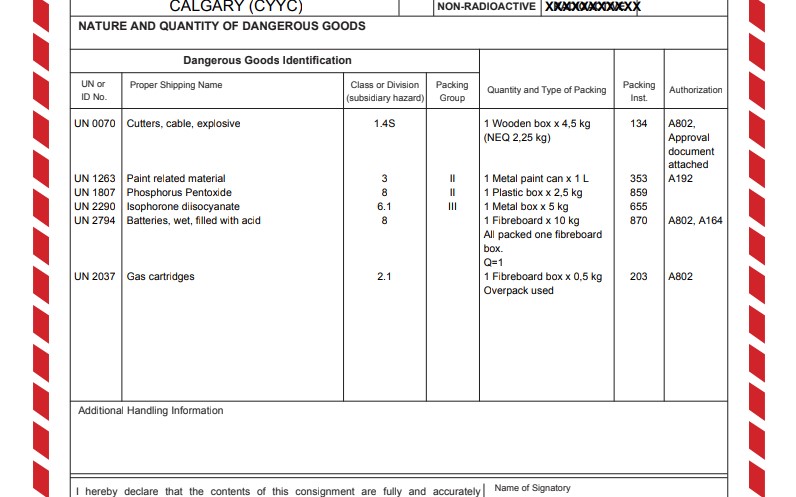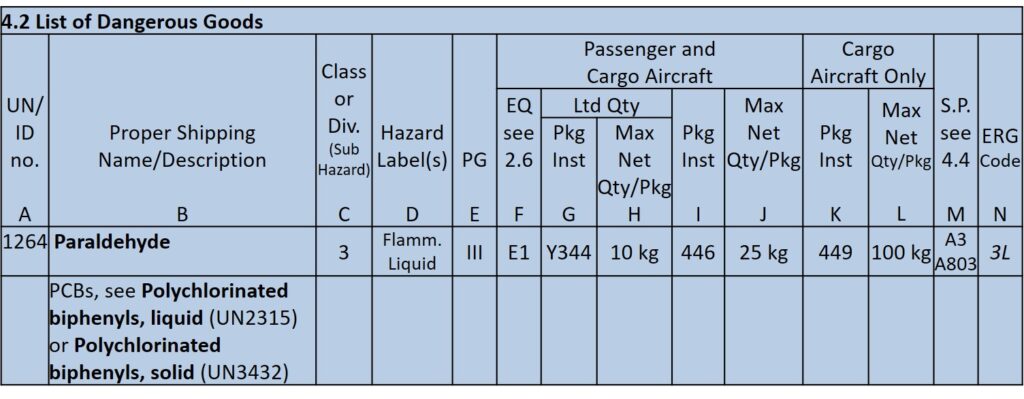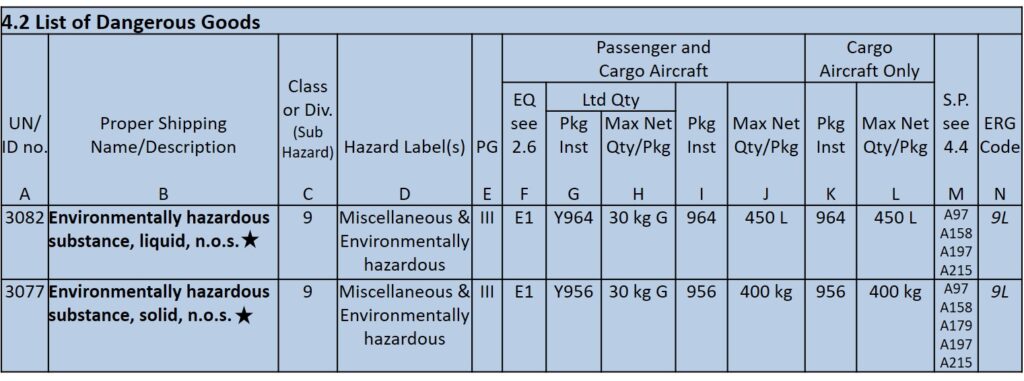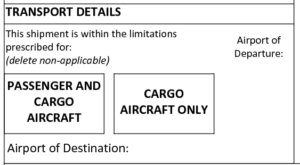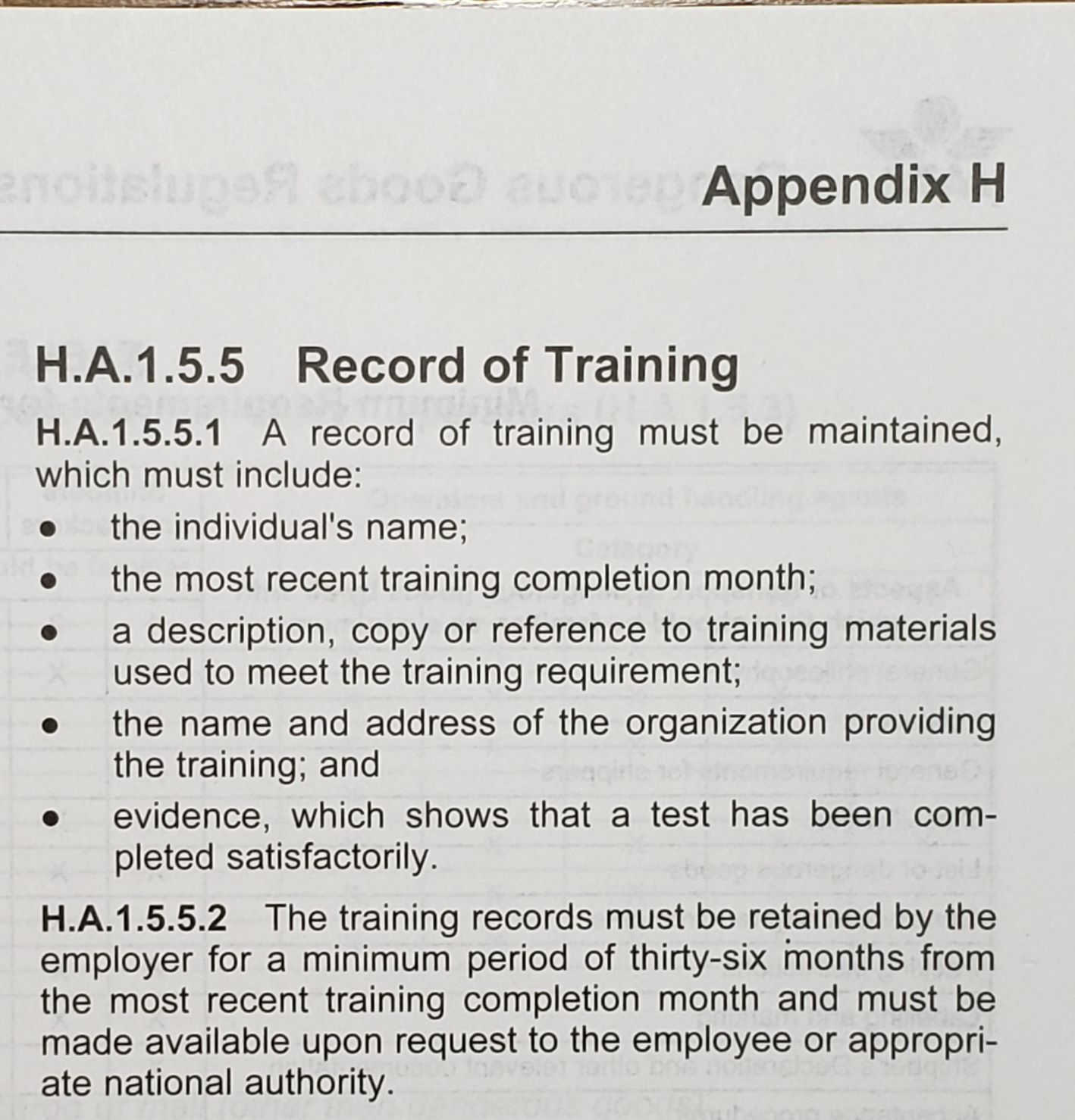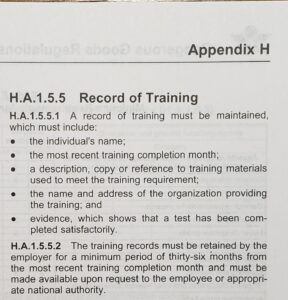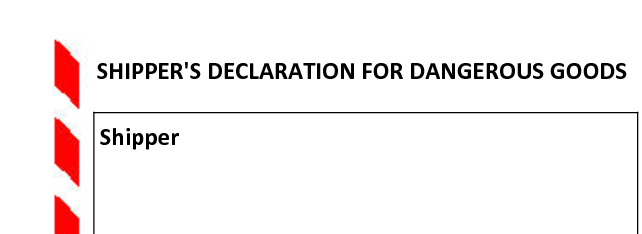Introduction:
The 63rd Edition of the IATA Dangerous Goods Regulations (effective January 1 through December 31, 2022) includes significant changes to the packing instructions for lithium cells and batteries when packed alone (UN3480 for lithium ion or UN3090 for lithium metal). The purpose of this article is to explain the removal of Section II from packing instructions 965 and 968 from the 2022 IATA Dangerous Goods Regulations for lithium cells and batteries.
Background:
IATA is the International Air Transport Association. It is a trade association of the world’s airlines. It supports aviation with global standards for airline safety, security, efficiency and sustainability. The IATA Dangerous Goods Regulations is a “field manual” version of the ICAO Technical Instructions. Written and edited by airline dangerous goods experts, the Dangerous Goods Regulations present the requirements for shipping dangerous goods by air in a user friendly, easy to interpret format.
1.1.4 of the IATA Dangerous Goods Regulations, states that the IATA Dangerous Goods Regulations contain all of the requirements of the ICAO Technical Instructions and include additional requirements and industry standards that are more restrictive.
ICAO is the International Civil Aviation Organization. It is a specialized agency of the United Nations. The ICAO Technical Instructions are a list of requirements for the transportation of hazardous goods by air. The technical instructions are based on the recommended procedures for the transport of dangerous goods created by the UN Sub Committee of Experts on the transport of dangerous goods (TDG Sub-Committee).
The Pipeline and Hazardous Materials Safety Administration within the United States Department of Transportation (USDOT/PHMSA) is responsible for developing and enforcing regulations for the safe, reliable, and environmentally sound transportation of nearly 1 million daily shipments of hazardous materials by land, sea, and air.
At 49 CFR 171.22(a) of the Hazardous Materials Regulations, USDOT/PHMSA authorizes the transport of hazardous materials (aka: dangerous goods) within the U.S. in accordance with the ICAO Technical Instructions with certain restrictions and limitations.
Scope and Applicability:
This article is applicable solely to the 63rd Edition of the IATA Dangerous Goods Regulations. These regulations are in effect from January 1, 2022 to December 31, 2022.
Compliance with this revision is mandatory after March 31, 2022. Until that date the Section II provisions of PI 965 and PI 968 may be used as they are found in the 62nd Edition (2021) of the IATA Dangerous Goods Regulations.
This revision applies solely to the following packing instructions:
- PI 965 for lithium ion cells and batteries packed alone (UN3480) on cargo aircraft only (CAO).
- PI 968 for lithium metal cells and batteries packed alone (UN3090) on cargo aircraft only (CAO).
Both PI 965 and PI 968 have a multitude of State and Operations variations that may effect the transport of a lithium cell or battery. The effect of these State and Operator variations are not considered in this article.
What is the Significant Change?
From page xxiii of the 63rd Edition: SIGNIFICANT CHANGES AND AMENDMENTS TO THE 63RD EDITION (2022)
PI 965 and PI 968 – Have been revised to remove Section II from these two packing instructions. To provide shippers with time to adapt their logistics processes to ship lithium cells and batteries in accordance with Section IB of Packing Instruction 965 and Packing Instruction 968, as applicable, there is a 3-month transition period until 31 March 2022, during which time shippers may continue to use Section II.
Consequential amendments have been made to 1.6.1, Special Provision A334, 7.1.5.5.1, Table 9.1.A and Table 9.5.A to reflect the deletion of Section II of Packing Instruction 965 and Packing Instruction 968.
Prior to the revision the Packing Instructions for lithium ion (PI 965) or lithium metal (PI 968) cells or batteries packed alone contained three sections:
- Section IA applied to:
- Lithium cells or batteries with a lithium content above the threshold amount. (see Lithium Content table below)
Or…
- Lithium cells or batteries packed in a quantity that exceeded that allowed in Section IB, Table 965-IB or Section IB, Table 968-IB, respectively.
Lithium Content
| Provision | Previous Citation | Final Citation | Comment |
|---|
| Definitions and General Standards |
| Definitions of Generator Categories. | 260.10, 261.5 and 262.34 | 260.10 | Previous definition of SQG in 260.10 was outdated. Generator categories were based on 261.5 and 262.34. |
| Hazardous Waste Limits for VSQGs | 261.5(a) and (e) | 260.10 | Included in the new definition of VSQG. |
| Purpose, Scope, and Applicability | 262.10 | 262.10 | Not moved, but expanded significantly. |
| Hazardous Waste Determination and Recordkeeping. | 262.11 and 262.40(c) | 262.11 | Content in 262.11 is expanded and 262.40(c) is incorporated. |
| Generator Category Determination | 261.5(c), (d), and (h)-(j) | 262.13 | New section that explains how to count hazardous waste to determine generator category. |
| EPA Identification Numbers | 262.12 | 262.18 | Re-notification requirements are also in this section. |
| Landfill Ban for Liquids | 258.28 | 262.35 | For SQGs and LQGs. |
| Very Small Quantity Generators (VSQGs) |
| VSQG Definition | 261.5(a) | 260.10 | Moved into new definition of VSQG. |
| VSQG Mixtures | 261.5(h)-(j) | 262.13(f) | Moved into Generator category determination. |
| Conditions for Exemption for a Very Small Quantity Generator. | 261.5(b), (f), and (g) | 262.14 | Included in VSQG conditions for exemption. |
| VSQG Consolidation by LQGs Within the Same Company. | N/A | 262.14(a)(5)(viii) | New provision. |
| Landfill Ban for Liquids | 258.28 | 262.14(b) | Specific citation for VSQGs. |
| Episodic Generation | N/A | Part 262 subpart L | New provision. |
| Satellite Accumulation Areas |
| Satellite Accumulation Area Provisions. | 262.34(c) | 262.15 | Moved from 262.34 |
| Selected Part 265 Subpart I Provisions. | 265.171 | 262.15(a)(1) | Duplicated from part 265. |
| Selected Part 265 Subpart I Provisions. | 265.172 | 262.15(a)(2) | Duplicated from part 265. |
| Selected Part 265 Subpart I Provisions. | 265.173(a) | 262.15(a)(4) | Duplicated from part 265. |
| Small Quantity Generators (SQGs) |
| Definition of Small Quantity Generator. | 262.34(d) | 260.10 | Moved into new definition of SQG. |
| Accumulation Time Limit | 262.34(d) | 262.16(b) | Moved. |
| Accumulation Limit | 262.34(d)(1) | 262.16(b)(1) | Moved. |
| Accumulation in Containers | 262.34(d)(2)
(references part 265 subpart I). | 262.16(b)(2) | Duplicated from part 265. |
| Accumulation in Tanks | 262.34(d)(3) (references part 265 subpart J). | 262.16(b)(3) | Duplicated from part 265. |
| Accumulation on Drip Pads | | 262.16(b)(4) references part 265 subpart W. | No previous regulatory reference for SQGs using drip pads. |
| Accumulation in Containment Buildings. | | 262.16(b)(5) references part 265 subpart DD. | No previous regulatory reference for SQGs using containment buildings. |
| Marking of Tanks and Containers | 262.34(d)(4) (references 262.34(a)(2) and (3)). | 262.16(b)(6) | Copied from 262.34 with some changes. |
| Preparedness and Prevention | 262.34(d)(4) (references part 265 subpart C) and 262.34(d)(5) | 262.16(b)(8) and (9) | Duplicated from part 265 and moved from 262.34. |
| Land Disposal Restrictions | 262.34(d)(4) (references part 268) | 262.16(b)(7) | There is still a cross references to part 268. |
| Transporting Over 200 Miles | 262.34(e) | 262.16(c) | Moved from 262.34. |
| Accumulation Time Limit Extension | 262.34(f) | 262.16(d) | Moved from 262.34. |
| Rejected Loads | 262.34(m) | 262.16(e) | Moved from 262.34. |
| Episodic Generation | N/A | Part 262 subpart L | New provision. |
| Large Quantity Generators (LQGs) |
| Definition of Large Quantity Generator. | N/A | 260.10 | New definition. |
| Accumulation Time Limit | 262.34(a) | 262.17(a) | Moved from 262.34. |
| Accumulation in Containers | 262.34(a)(1)(i) references part 265 subparts I, AA, BB, and CC. | 262.17(a)(1) (262.17(a)(1) also references part 265 subparts AA, BB, CC). | There is still a cross-reference to part 265 subparts AA, BB, and CC because of the length of these regulations. |
| Accumulation in Tanks | 262.34(a)(1)(ii) references part 265 subparts J, AA, BB, and CC. | 262.17(a)(2) references part 265 subparts J, AA, BB, CC. | There is still a cross-reference to part 265 subparts J, AA, BB, CC because of the length of these regulations. |
| Accumulation on Drip Pads | 262.34(a)(1)(iii) (262.34(a)(1)(iii) also references part 265 subpart W). | 262.17(a)(3) (262.17(a)(3) also references part 265 subpart W). | Accumulation timne limit and recordkeeping provisions move to 262.17 and the extensive technical standards remain in part 265. |
| Accumulation in Containment Buildings. | 262.34(a)(1)(iv) (262.34(a)(1)(iv) also references part 265 subpart DD). | 262.17(a)(4) (262.17(a)(4) also references part 265 subpart DD). | Accumulation time limit, labeling, and recordkeeping provisions move to 262.17 and the extensive technical standards remain in part 265. |
| Marking and Labeling | 262.34(a)(2) and (3) | 262.17(a)(5) | Moved from 262.34. |
| Preparedness, Prevention, and Emergency Procedures. | 262.34(a)(4) references part 265 subparts C and D. | 262.17(a)(6) references part 262 subpart M. | Cross-references remain but to a new subpart of the generator regulations. |
| Personnel Training | 262.34(a)(4) | 262.17(a)(7) | Moved from 262.34. |
| Closure | 262.34(a)(1)(iv)(B) references 265.11 and 265.114. Section 265.111 references other sections in part 265. | 262.17(a)(8) | Duplicated from 265.11 and 265.114 with some revisions. |
| Land Disposal Restrictions | 262.34(a)(4) references applicable parts of part 268. | 262.17(a)(9) | There is is still a cross-reference to part 268. |
| Extension of Accumulation Times | 262.34(b) | 262.17(b) | Moved from 262.34. |
| Accumulation of F006 | 262.34(g) through (i) | 262.17(c) through (e) | Moved from 262.34. |
| Accepting waste from VSQGs under the control of the same person to consolidate before sending to TSDF. | N/A | 262.17(f) | New provision. |
| Rejected Loads | 262.34(m) | 262.17(g) | Moved from 262.34. |
Section IB, Table 965-IB
| 262.11 Hazardous Waste Determination and Record keeping |
|---|
| New - 262.11 | Old - 262.11 |
| A person who generates a solid waste, as defined in 40 CFR 261.2, must make an accurate determination as to whether that waste is a hazardous waste in order to ensure wastes are properly managed according to applicable RCRA regulations. A hazardous waste determination is made using the following steps: | A person who generates a solid waste, as defined in 40 CFR 261.2, must determine if that waste is a hazardous waste using the following method: |
| (a) The hazardous waste determination for each solid waste must be made at the point of waste generation, before any dilution, mixing, or other alteration of the waste occurs, and at any time in the course of its management that it has, or may have, changed its properties as a result of exposure to the environment or other factors that may change the properties of the waste such that the RCRA classification of the waste may change. | |
| (b) A person must determine whether the solid waste is excluded from regulation under 40 CFR 261.4. | (a) He should first determine if the solid waste is excluded from regulation under 40 CFR 261.4. |
| (c) If the waste is not excluded under 40 CFR 261.4, the person must then use knowledge of the waste to determine whether the waste meets any of the listing descriptions under sub part D of 40 CFR part 261. Acceptable knowledge that may be used in making an accurate determination as to whether the waste is listed may include waste origin, composition, the process producing the waste, feed stock, and other reliable and relevant information. If the waste is listed, the person may file a delisting petition under 40 CFR 260.20 and 260.22 to demonstrate to the Administrator that the waste from this particular site or operation is not a hazardous waste. | (b) He must then determine if the waste is listed as a hazardous waste in sub part D of 40 CFR part 261 |
(d) The person then must also determine whether the waste exhibits one or more hazardous characteristics as identified in sub part C of 40 CFR part 261 by following the procedures in the paragraph (d)(1) or (2) of this section or a combination of both.
(1) The person must apply knowledge of the hazard characteristic of the waste in light of the material or the processes used to generate the waste. acceptable knowledge may include process knowledge (e.g., information about chemical feed stocks and other inputs to the production process); knowledge of products, by-products, and intermediates produced by the manufacturing process; chemical or physical characterization of wastes; information on the chemical and physical properties of the chemical used o produced by the process or otherwise contained waste; testing that illustrates the properties of the waste; or other reliable or relevant information about the properties of the waste or its constituents. A test other than a test method set forth in sub part C of 40 CFR part 261, or an equivalent test method approved by the Administrator under 40 CFR 260.21, may be used as part of a person's knowledge to determine whether a solid waste exhibits a characteristic of a hazardous waste. However, such tests do not, by themselves, provide definitive results. Persons testing their waste must obtain a representative sample of the waste for the testing, as defined at 40 CFR 260.10.
(2) When available knowledge is inadequate to make an accurate determination, the person must test the waste according to the applicable methods set forth in sub part C of 40 CFR part 261 or according to an equivalent method approved by the Administrator under 40 CFR 260.21 and in accordance with the following:
(i) Persons testing their waste must obtain a representative sample of the waste for testing, as defined in 40 CFR 260.10.
(ii) where a test method is specific in sub part C of 40 CFR part 261, the results of the regulatory test, when poperly performed, are definitive for determining the regulatory status of the waste. | (c) For purposes of compliance with 40 CF part 268, or if the waste is not listed in sub part D of 40 CFR part 261, the generator must then determine whether the waste is identified in sub part C of 40 CFR part 261 by either:
(1) Testing the waste according to the methods set forth in subpart C of 40 CFR part 261, or according to an equivalent method appoved by the Administrator under 40 CFR 260.21; or
(2) Applying knowledge of the hazard characteristics of the waste in light of the materials or the processes used. |
| (e) If the waste is determined to be hazardous, the generator must refer to parts 261, 264, 265, 266, 267, 268, and 273 of this chapter for other possible exclusions or restrictions pertaining to the management of the specific waste. | (d) If the waste is determined to be hazardous, the generator must refer to parts 261, 264, 265, 266, 267, 268, and 273 of this chapter for other possible exclusions or restrictions pertaining to the management of the specific waste. |
| (f) Record keeping for small and large quantity generators. A small or large quantity generator must maintain records supporting its hazardous waste determinations, including records that identify whether a solid waste is a hazardous waste, as defined by 40 CFR 261.3. Records must be maintained for at least three years from the date that the waste was last sent to on-site or off-site treatment, storage, or disposal. These records must comprise the generators's knowledge of the waste and support the generator's determination, as described at paragraphs (c) and (d) of this section. The records must include, but are not limited to, the following types of information: the results of any test, sampling, waste analyses, or other determinations made in accordance with this section, records documenting the tests, sampling, and analytical methods used to demonstrate the validity and relevance of such tests; records consulted in order to determine the process by which the waste was generated, the composition of the waste, and properties of the waste; and records which explain the knowledge basis for the generator's determination, as described at paragraph (d)(1) of this section. The periods of record retention referred to in this section are extended automatically during the course of any unresolved enforcement action regarding the regulated activity or as requested by the Administrator. | |
| (g) Identifying hazardous waste numbers for small and large quantity generatos. If the waste is determined to be hazardous, small quantity generators and large quantity generators must identify all aplicable EPA hazardous waste numbers (EPA hazardous waste codes) in sub part C and D of part 261 of this chapter prior to shipping the waste off site, the generator also must mark its containers with all applicable EPA hazardous waste numbers (EPA hazardous waste codes) according to §262.32. | |
Section IB, Table 968-IB
| Generator Status | Number of Facilities | Total Hazardous Waste Generated (tons) | Percent of Total Hazardous Waste Generated |
|---|
| VSQGs | 353,400 - 591,800 | 46,000 - 148,000 | <1% |
| SQGs | 49,900 - 64,300 | 66,000 - 141,000 | <1% |
| LQGs | 20,800 | 35.2 million | 99% |
| Total | 424,100 - 676,900 | 35.3 - 35.4 million | 100% |
| Numbers of VSQGs and SQGs are estimates based on the Biennial Report and limited state data. LQG numbers are derived from the Biennial Report for 2013. |
- Section IB applied to:
- Lithium cells or batteries with a lithium content at or below the threshold amount packed in a quantity that exceeded that allowed in Section II, Table 965-II or Section II, Table 968-II, respectively.
Section II, Table 965-II
| 262.11 Hazardous Waste Determination and Record keeping |
|---|
| New - 262.11 | Old - 262.11 |
| A person who generates a solid waste, as defined in 40 CFR 261.2, must make an accurate determination as to whether that waste is a hazardous waste in order to ensure wastes are properly managed according to applicable RCRA regulations. A hazardous waste determination is made using the following steps: | A person who generates a solid waste, as defined in 40 CFR 261.2, must determine if that waste is a hazardous waste using the following method: |
| (a) The hazardous waste determination for each solid waste must be made at the point of waste generation, before any dilution, mixing, or other alteration of the waste occurs, and at any time in the course of its management that it has, or may have, changed its properties as a result of exposure to the environment or other factors that may change the properties of the waste such that the RCRA classification of the waste may change. | |
| (b) A person must determine whether the solid waste is excluded from regulation under 40 CFR 261.4. | (a) He should first determine if the solid waste is excluded from regulation under 40 CFR 261.4. |
| (c) If the waste is not excluded under 40 CFR 261.4, the person must then use knowledge of the waste to determine whether the waste meets any of the listing descriptions under sub part D of 40 CFR part 261. Acceptable knowledge that may be used in making an accurate determination as to whether the waste is listed may include waste origin, composition, the process producing the waste, feed stock, and other reliable and relevant information. If the waste is listed, the person may file a delisting petition under 40 CFR 260.20 and 260.22 to demonstrate to the Administrator that the waste from this particular site or operation is not a hazardous waste. | (b) He must then determine if the waste is listed as a hazardous waste in sub part D of 40 CFR part 261 |
(d) The person then must also determine whether the waste exhibits one or more hazardous characteristics as identified in sub part C of 40 CFR part 261 by following the procedures in the paragraph (d)(1) or (2) of this section or a combination of both.
(1) The person must apply knowledge of the hazard characteristic of the waste in light of the material or the processes used to generate the waste. acceptable knowledge may include process knowledge (e.g., information about chemical feed stocks and other inputs to the production process); knowledge of products, by-products, and intermediates produced by the manufacturing process; chemical or physical characterization of wastes; information on the chemical and physical properties of the chemical used o produced by the process or otherwise contained waste; testing that illustrates the properties of the waste; or other reliable or relevant information about the properties of the waste or its constituents. A test other than a test method set forth in sub part C of 40 CFR part 261, or an equivalent test method approved by the Administrator under 40 CFR 260.21, may be used as part of a person's knowledge to determine whether a solid waste exhibits a characteristic of a hazardous waste. However, such tests do not, by themselves, provide definitive results. Persons testing their waste must obtain a representative sample of the waste for the testing, as defined at 40 CFR 260.10.
(2) When available knowledge is inadequate to make an accurate determination, the person must test the waste according to the applicable methods set forth in sub part C of 40 CFR part 261 or according to an equivalent method approved by the Administrator under 40 CFR 260.21 and in accordance with the following:
(i) Persons testing their waste must obtain a representative sample of the waste for testing, as defined in 40 CFR 260.10.
(ii) where a test method is specific in sub part C of 40 CFR part 261, the results of the regulatory test, when poperly performed, are definitive for determining the regulatory status of the waste. | (c) For purposes of compliance with 40 CF part 268, or if the waste is not listed in sub part D of 40 CFR part 261, the generator must then determine whether the waste is identified in sub part C of 40 CFR part 261 by either:
(1) Testing the waste according to the methods set forth in subpart C of 40 CFR part 261, or according to an equivalent method appoved by the Administrator under 40 CFR 260.21; or
(2) Applying knowledge of the hazard characteristics of the waste in light of the materials or the processes used. |
| (e) If the waste is determined to be hazardous, the generator must refer to parts 261, 264, 265, 266, 267, 268, and 273 of this chapter for other possible exclusions or restrictions pertaining to the management of the specific waste. | (d) If the waste is determined to be hazardous, the generator must refer to parts 261, 264, 265, 266, 267, 268, and 273 of this chapter for other possible exclusions or restrictions pertaining to the management of the specific waste. |
| (f) Record keeping for small and large quantity generators. A small or large quantity generator must maintain records supporting its hazardous waste determinations, including records that identify whether a solid waste is a hazardous waste, as defined by 40 CFR 261.3. Records must be maintained for at least three years from the date that the waste was last sent to on-site or off-site treatment, storage, or disposal. These records must comprise the generators's knowledge of the waste and support the generator's determination, as described at paragraphs (c) and (d) of this section. The records must include, but are not limited to, the following types of information: the results of any test, sampling, waste analyses, or other determinations made in accordance with this section, records documenting the tests, sampling, and analytical methods used to demonstrate the validity and relevance of such tests; records consulted in order to determine the process by which the waste was generated, the composition of the waste, and properties of the waste; and records which explain the knowledge basis for the generator's determination, as described at paragraph (d)(1) of this section. The periods of record retention referred to in this section are extended automatically during the course of any unresolved enforcement action regarding the regulated activity or as requested by the Administrator. | |
| (g) Identifying hazardous waste numbers for small and large quantity generatos. If the waste is determined to be hazardous, small quantity generators and large quantity generators must identify all aplicable EPA hazardous waste numbers (EPA hazardous waste codes) in sub part C and D of part 261 of this chapter prior to shipping the waste off site, the generator also must mark its containers with all applicable EPA hazardous waste numbers (EPA hazardous waste codes) according to §262.32. | |
Section II, Table 968-II
| Generator Status | Number of Facilities | Total Hazardous Waste Generated (tons) | Percent of Total Hazardous Waste Generated |
|---|
| VSQGs | 353,400 - 591,800 | 46,000 - 148,000 | <1% |
| SQGs | 49,900 - 64,300 | 66,000 - 141,000 | <1% |
| LQGs | 20,800 | 35.2 million | 99% |
| Total | 424,100 - 676,900 | 35.3 - 35.4 million | 100% |
| Numbers of VSQGs and SQGs are estimates based on the Biennial Report and limited state data. LQG numbers are derived from the Biennial Report for 2013. |
- Section II applied to:
- Lithium cells or batteries with a lithium content at or below the threshold amount and packed in a quantity that did not exceed that allowed in Section II, Table 965-II or Section II, Table 968-II, respectively.
Interested in site specific training at your site that covers this topic, and more! Ask me about my Onsite Training |
After the revision the Packing Instructions for lithium ion (PI 965) or lithium metal (PI 968) cells or batteries packed alone contain only two sections:
- Section IA remains unchanged.
- Section IB now applies solely to lithium cells or batteries with a lithium content at or below the threshold amount and in a quantity that does not exceed that allowed in Section IB, Table 965-IB or Section IB, Table 968-IB, respectively.
- Section II has been removed.
What’s it mean?
After the effective date (March 31, 2022), the packing instructions for a lithium ion or lithium metal cell or battery packed alone (PI 965 or PI 968, respectively) will no longer include the packaging exception from full regulation in Section II. Under the packing instructions of Section IB, a lithium ion or lithium metal cell or battery packed alone is subject to all of the applicable provisions of the IATA Dangerous Goods Regulations (including the General Requirements) except for the requirement to use a specification (UN Standard) packaging.
Consequential Amendments to Reflect the Deletion of Section II of PI 965 and PI 968:
- 1.6.1 Adequate Instruction for Shipping Section II Lithium Batteries removed the reference to PI 965 and PI 968 since these packing instructions no longer contain a Section II.
- Special Provision A334 was revised to remove the reference to Table 965-II and Table 968-II. However, the values from those tables were added to A334 resulting in no effective change to the special provision.
- 7.1.5.5.1 for the lithium battery mark was revised to remove the reference to Section II for both PI 965 and PI 968.
- Table 9.1.A Applicable Acceptance Procedures Summary (9.1.3.3) was revised to remove the reference to Section II for PI 965 and PI 968.
- Table 9.5.A Dangerous Goods Not Required to Appear on the Information to Pilot-in-Command (9.5.1.1.3.4) was revised to remove the reference to Section II for PI 965 and PI 968.
Conclusion:
Compliance with the IATA Dangerous Goods Regulations for the transportation of lithium cells or batteries just got harder. Or did it? While the Section II packing instructions offered some relief from full regulation, having three sections (IA, IB, & II) for both PI 965 and PI 968 made the classification of lithium cells or batteries packed alone very difficult. And while the Section IB packing instructions are more stringent than those of Section II (e.g., Section IB requires initial and biennial training whereas Section II does not), Section IB does not require specification packaging which means a shipper of these batteries can still save money on packaging and transportation costs.

